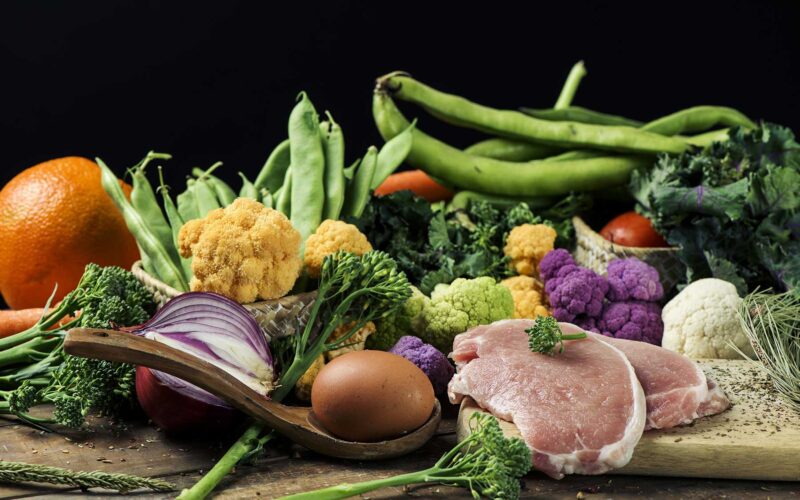We believe onions are a superfood that fit into any healthy lifestyle. If your goal is to lose weight, you need a diet of nutrient-dense foods like onions, fruits, and other veggies, while maintaining a calorie deficit. One way to achieve all of this is by practicing flexible dieting.
Flexible dieting, or counting macros, is a fairly simple way to lose weight. But all diets come with pros and cons, so let’s take a closer look at this lifestyle.
BEFORE MAKING CHANGES TO YOUR DIET, PLEASE CONSULT A DOCTOR AND/OR A REGISTERED DIETICIAN.
Origin
Flexible dieting revolves around counting macros, which became popular around 2016. If It Fits Your Macros (IIFYM), created by bodybuilder Anthony Collova, was the first big movement to explore counting macronutrients rather than counting calories. IIFYM involves looking at the protein, carbohydrates, and fat in each food, and finding a balance that fits your specific body.
Once you figure out how many grams of each macronutrient you need to eat per day in order to lose weight, the IIFYM claim to fame is that you can eat ANYTHING! According to IIFYM, “no foods are off-limits” as long as you stay within your allotted allowance of macros.
Benefits
Many people feel more freedom with flexible dieting and see results sooner. Because of the precise tracking of food, participants are able to manage weight loss in a more predictable way. This diet is also very popular among bodybuilders, because the body is able to retain more muscle and shed fat while tracking macros.
Drawbacks
Flexible dieting can feel like a lot of work for many people. From calculating your exact macro numbers, to finding the nutritional info in all of your food, it can seem overwhelming at first. IIFYM also recommends participants buy a food scale to get precise measurements, adding an additional step to meal prep.
After a while, counting the macros of everything you eat can become tedious and tiring. And overanalyzing foods can lead to obsessive eating habits, making what was once a flexible option into a rigorous daily ritual.
Should You Consider Flexible Dieting?
If you’re looking to see results sooner rather than later, and don’t want to cut out any food groups, flexible dieting may be a good choice for you. As always, consult with your doctor before making any drastic changes to your diet.
Is It Sustainable?
While some people find counting macros excessive, others have great success and begin to memorize macros, falling into a sustainable rhythm.
Tips for Dining At a Restaurant or While Travelling
As with any diet, counting macros can be tricky away from home. Many restaurants are able to provide a list of nutritional information, which is especially helpful with flexible dieting. If no nutrition info is available, choose items you’re familiar with. For example, if you often eat a grilled chicken salad at home, you can probably guess the macros of a similar dish when eating out.
For airplane rides and road trips, meal prep macro-friendly snacks in pre-allocated portions. This way, you know exactly how many macros you’re consuming, rather than mindlessly snacking on a bag of chips or beef jerky.
What Area of the Grocery Store to Shop In
With flexible dieting, you pretty much have free reign of the grocery store. However, you’ll feel more full and satisfied by sticking to fruits, veggies (like onions of course), whole grains, and lean protein like chicken and beef. You’ll get more out of your macros by choosing healthy options, every time.
Common Food Alternatives
In order to get the most bang for your buck, consider these food alternatives.
- Low fat dairy over full fat
- Corn tortillas over flour
- 92/8 lean ground beef
- Spaghetti squash over spaghetti noodles
Recipes
Thin Crust Pizza
Every diet is better when pizza is involved! To make a macro-friendly thin crust pizza, we recommend using fat-free mozzarella cheese, tomato sauce and tons of veggies—including diced celery and onion.
This dessert is macro-friendly and so rich, you’ll only need a single serving to be satisfied. To make a simple mousse, melt about 5 ounces of dark chocolate over a double boiler, then combine with freshly whipped cream, three whipped egg whites, and a little bit of sugar.
If you decide to try flexible dieting, remember to include as many nutrient-dense foods like onions into your diet as possible, in order to feel healthy, happy, and energized.
Ready to try onions the Gills Way? For more information, contact our sales department.

